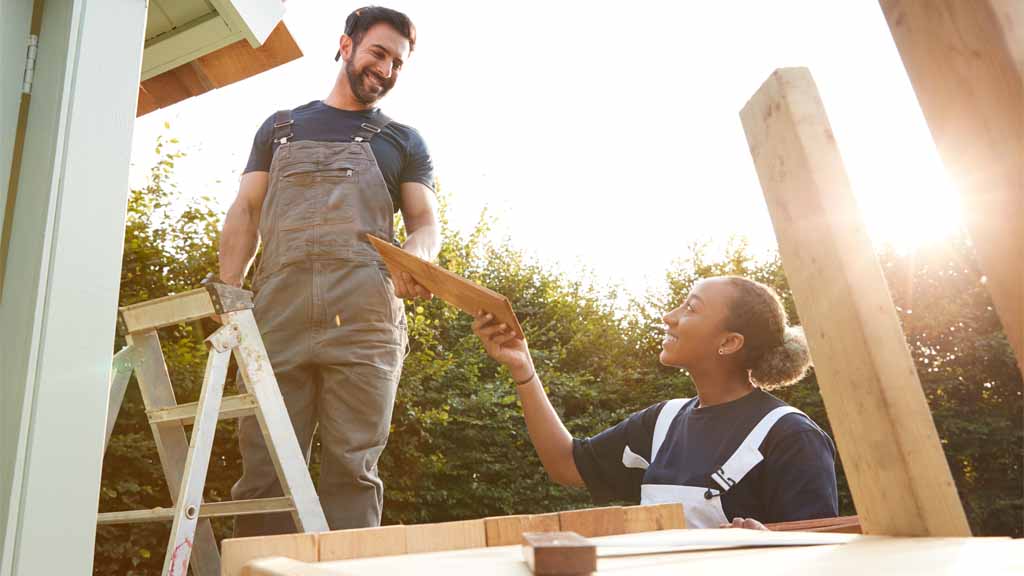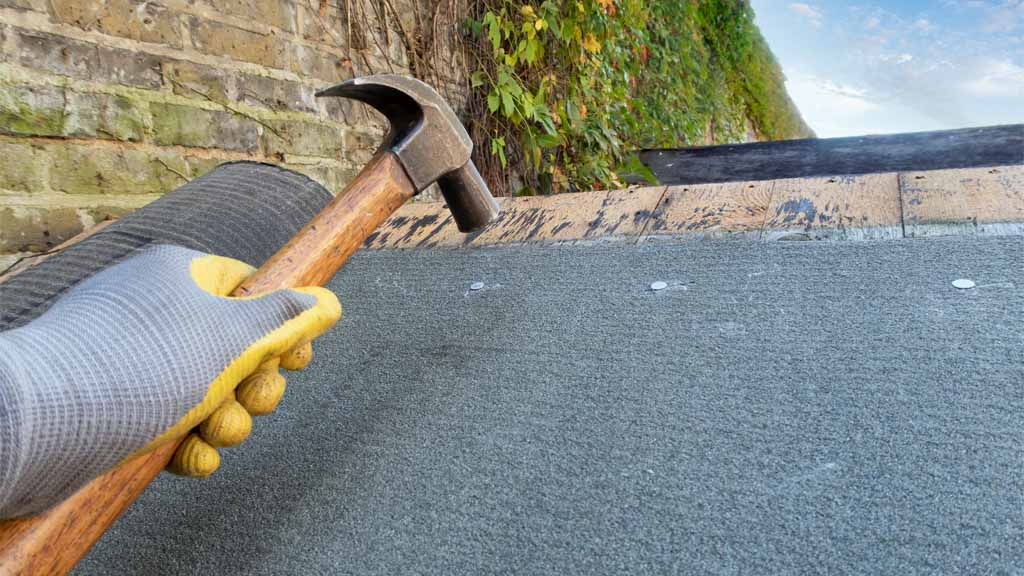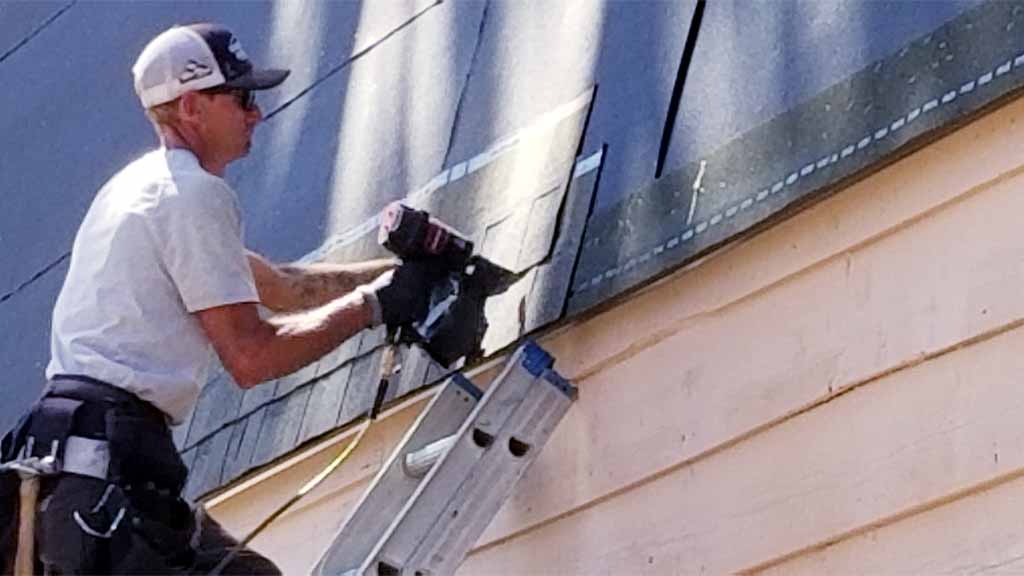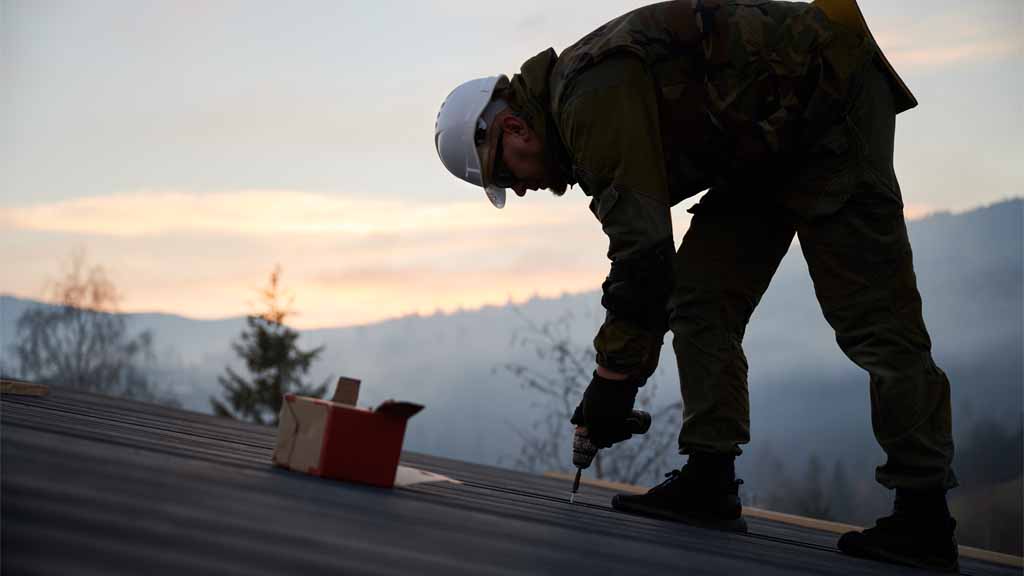
If you are considering adding a roof pitch to your home, you may wonder if it is worth the costs and effort. The good news is that it can be a solution to many problems when it comes to your home’s structure and foundation.
Why It Can Be Beneficial
A roof pitch is the angle of your roof, measured in degrees. Because you’re reading this article right now, it’s safe to assume that you know what a degree is, but in case: A degree is a measurement of arc length on a circle. Think of it as the distance between two points on a process (a straight line would be 0°).
An excellent example of why building with an increased or decreased level can be beneficial would be if you had an area where water tended to pool and wanted less drainage; adding an incline would help prevent this.
Another example might include adding more space for placing things like solar panels—the higher they are placed. The less likely they will get damaged by weather conditions like strong winds or heavy snowfall during winter months when roofs tend to get covered with ice crystals due to being raised above ground level so much.
This may sound easy enough to understand but sometimes knowing how much slope equals what type means gets tricky. But more of an overview needs to be done. If you need to learn how to do this, training before jumping in feet first.
The last thing you want is your roof to cave in on itself because you didn’t know how much weight it could handle without caving in. It would be helpful to know how much slope equals what type because this can help determine if you need to install gutters or a roof overhang. Adding these features will help prevent water from pooling on your roof and causing damage.

DIY Roof Pitch Can Be A Solution To The Problem
A DIY roof pitch can be a solution to the problem.
- You save money by doing it yourself.
- You get a better result with one of your makings rather than having someone else do it for you, no matter how good they are or how much experience they have.
- By learning about what goes into building roofs and understanding how the finished product will work, you gain valuable knowledge that helps educate others about your skill set! If nothing else, it’s nice to know something about roofing besides being able to fix leaks when needed.
- Knowing that others look up at our homes every day without even knowing what goes on underneath them makes us all feel like we’re living in some secret society
I was about to write this article when I came across this article that explains exactly how much slope equals what type in plain English, with plenty of examples for each.
This is why it’s essential to have a general understanding of things before jumping into something like this because if you need to know what you’re doing, it can cause more problems than if you had left it alone, while it can be a complex process.
Learning how to build a roof is something that any homeowner with basic carpentry skills and some patience can do. Roofing is not just about knowing how to lay down shingles or install flashing; it’s also about understanding how the structure works to make the most of what you have available.
Take that number and multiply it by your roof’s height. So if you have a four-foot-high eave, then 4 x 8 feet = 32 inches long.
The pitch of your roof can have a significant impact on the overall look and feel of your home. A steeper angle generally provides more headroom inside and makes it easier to walk around outside since the roof isn’t as close to you when standing at ground level.
Is Your Roof Leaking?
What Is A Roof Pitch, And How Is It Measured?
A roof pitch is an angle at which a roof rises from its lowest to its highest point. It’s usually measured in degrees, and there are plenty of formulas for calculating your roof pitch. But if you don’t care about that sort of thing, here’s a simple way to figure it out:
- Measure the horizontal line across the bottom edge of your home
- Measure from that same point up to where your eave meets the wall (where it slopes downward)
- Take those two measurements and divide
The roofing system you choose will also impact the project’s overall cost. Certain materials are more expensive than others, and some require additional labor because they are more challenging to install (such as slate tiles).
If you’re experiencing problems with leaks, mold, or rot in your home, it’s time to call a roofing contractor. Roofing contractors are experts at identifying issues and providing solutions that will keep your home safe and secure for years.
You’ll need to calculate the length of your roof. If your home has a flat roof, this is easy—it’s just the width of your house from one side to the other. But if it has a pitched roof, you’ll need to measure from high point to high point on each side. Then take that number and multiply it by two for an accurate total.

List The Benefits Of Adding A Roof Pitch
Adding a roof pitch to your home can have many benefits.
- Increase the value of your home
- Increase the energy efficiency of your home
- Increase the comfort of your home
- Increase the durability of your home
You can choose your roofing and underlayment material, ensuring you get what you want.
This is the average pitch for most homes. If your roof is steeper than 4 inches per foot, it’s considered a “high” pitch; if it’s less steep, it’s a low pitch.
There are many reasons to consider a new roof, including damage or leaks that can lead to mold and rot. If you have mold in your attic or outside your house, it could damage your home’s structure over time. If you notice water stains on ceilings, walls, and around light fixtures, this could indicate moisture in your attic.
Is Your Roof Leaking?
What Is The Best Way To Measure A Roof Pitch?
The cost of adding a roof pitch to your home depends on several factors, including the size of your house and the materials that you choose. For example,roofers in Downey, CA if you have an old roof with minimal slope, it will be more expensive to add a steeper pitch than if you were starting from scratch with a brand-new building and needed to build up the sloping sides of your home.
The cost also varies depending on whether or not you hire someone else to do it or do it yourself. If you are hiring contractors and workers, their hourly rate will factor into how much money this project costs (as well as any licenses or permits necessary).
It would be best to consider how many hours they work per day. Some contractors may charge less per hour but expect more out of them in terms of the number of days on-site working directly with their crew members under supervision by themselves or someone else overseeing them at all times during construction processes, like laying tiles down.
You can also choose your color and style, making your home look amazing. You will be able to get the roofing system you want, which means you will only have to settle for something you like.

Many Roofing Contractors Charge A Small Fortune For Roof Pitch Installation
Many roofing contractors charge a small fortune for roof pitch installation. But if you’re willing to learn the basics, you can save a lot of money and do it yourself.
Roof pitch is not just a cosmetic issue—it’s essential for keeping water out of your home. Roof pitch can also help with energy efficiency by providing extra shade on warmer days and reducing cooling costs in the summer months.
It could even lower temperatures inside your house so that you don’t have to use air conditioning as much during those hot summer months.
However, if you need to know what you’re doing when installing a new roof pitch, there’s no guarantee that everything will go smoothly or turn out how you want it to look when all is said and done.
There are many different types of diy roof pitch that homeowners can choose from when building new homes or repairing old ones. Some of these include metal roofs, shingle roofs, and tile roofs.
While each has its unique benefits and drawbacks (which we’ll discuss in more detail below), one type stands out: the DIY Roof PitchAn attic is a great place to add insulation.
The more you have, the warmer your home will be. It’s essential to insulate your attic if you live in an area with lots of snowfall; otherwise, that snow on your roof can cause severe damage when it melts!
Is Your Roof Leaking?
Different Kind Of Underlayment
When you have a pitched roof, you’ll need a different kind of underlayment on your new pitched roof. Underlayment is the layer of insulation between the top and the shingles. It prevents heat loss, leaks, and damage to shingles.
You should use at least 15 pounds (60 square feet) per 100 square feet of attic space for an average-sized house with an 8/12 pitch. If your home has a steeper slope than that, add more layers of underlayment if needed for insulation.
If you are doing this project yourself, the cost will be lower, but it will take longer. You should also factor in your hourly rate if you are working on this project as a side job or if it is not your profession.
The first step to installing a new diy roof pitch is measuring the angles of your existing roof. This will help you determine what angle would be best for your home and which materials to use when replacing it. You’ll need something like an inclinometer or a protractor to do this; plenty of free online resources can help you figure out how to measure roof pitch.
You will be able to find the right style and color you want, which means you can get what you want. .t’s essential to know the rise and how to measure it. You also need to be aware of potential problems that can arise when you change the pitch of your roof.

You Are Raising Your Trusses Or The Rafters.
Raising your trusses or rafters is pretty straightforward, but it can be dangerous if done improperly. The first step is ensuring you have the suitable materials and tools for the job. You will need the following:
- A ladder
- A hammer (or some other device to tap the trusses with)
- Measuring tape (if you don’t already know how long your roof pitch will be)
An attic is a great place to add insulation. The more you have, the warmer your home will be. It’s vital to insulate your attic if you live in an area with lots of snowfall; otherwise, that snow on your roof can cause severe damage when it melts pencil and paper.
A steel tape measure Level
You’ll also want to ensure that you keep the diy roof pitch of your home the same by 3 degrees. If the slope is too steep or too flat, it could cause problems with drainage from rain and snow.
The first step is ensuring that you have the suitable materials and tools for the job. You will need A ladder, A hammer (or some other device to tap the trusses with) Measuring tape (if you don’t already know how long your roof pitch will be).
Can Save Money On Your Home Repairs
DIY Roof Pitch is one way you can save money on your home repairs. The pitch of your roof refers to the angle at which it slopes. This affects how much water drains the top and into gutters, but it also has a significant impact on the lifespan roof.
The steeper the pitch, the more durable it is and the less prone to leaks or damage from weather conditions. DIY Roof Pitch may be the perfect solution if you want a long-lasting roof that protects against windstorms and other adverse conditions.
In addition to saving money over time by extending the life of your current home repair needs (or saving up for future ones), DIY Roof Pitch is an easy process that doesn’t require any special skills – just some basic knowledge about how roofs work.
By learning more about how this vital part works on top of buildings worldwide (and even inside them!), homeowners everywhere will gain insight into how these structures hold up under their weight while protecting us all below ground level.
So when you’re ready to learn more about DIY Roof Pitch, check out our other articles and resources on this page. You can also contact us directly if you want to get in touch with us with any questions or concerns about your current roofing situation.
Conclusion
We hope this article has helped you understand the benefits of adding a roof pitch to your home. DIY Roof Pitch is one way to save money on repairs, but it’s important to remember that this is still a complicated process.
If you want professional results, we recommend hiring an experienced contractor who can guide you through every step of the procedure safely and efficiently!

